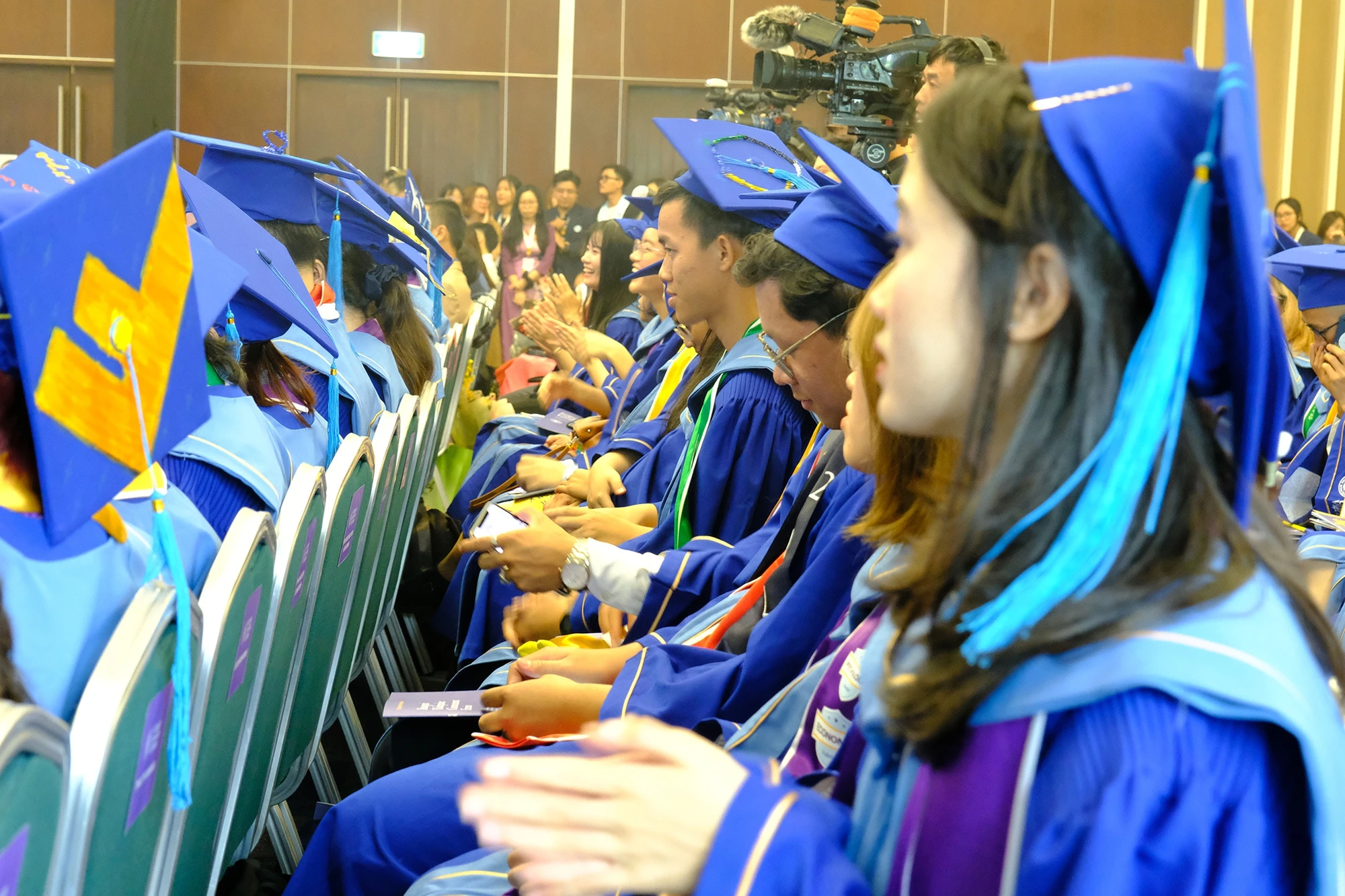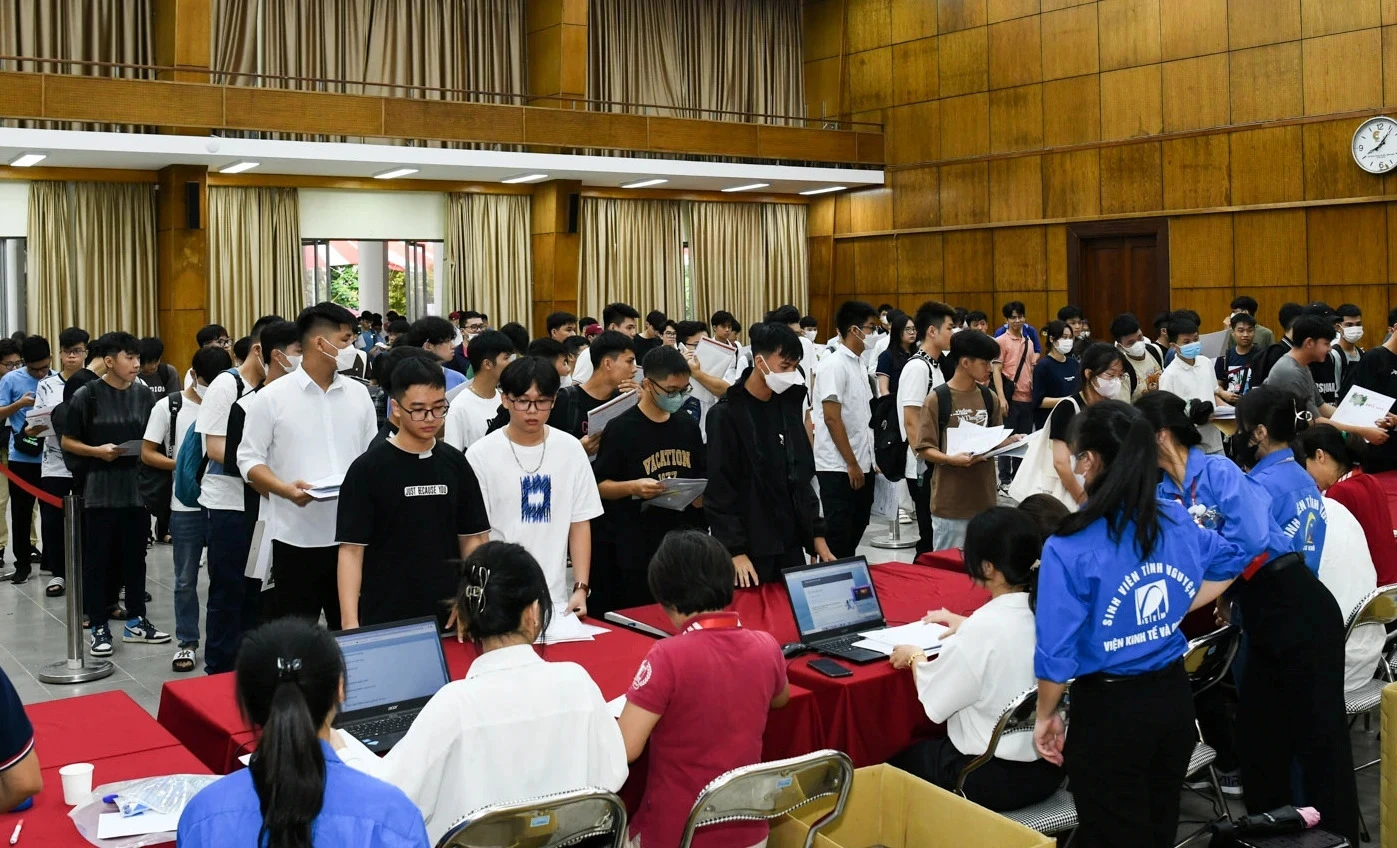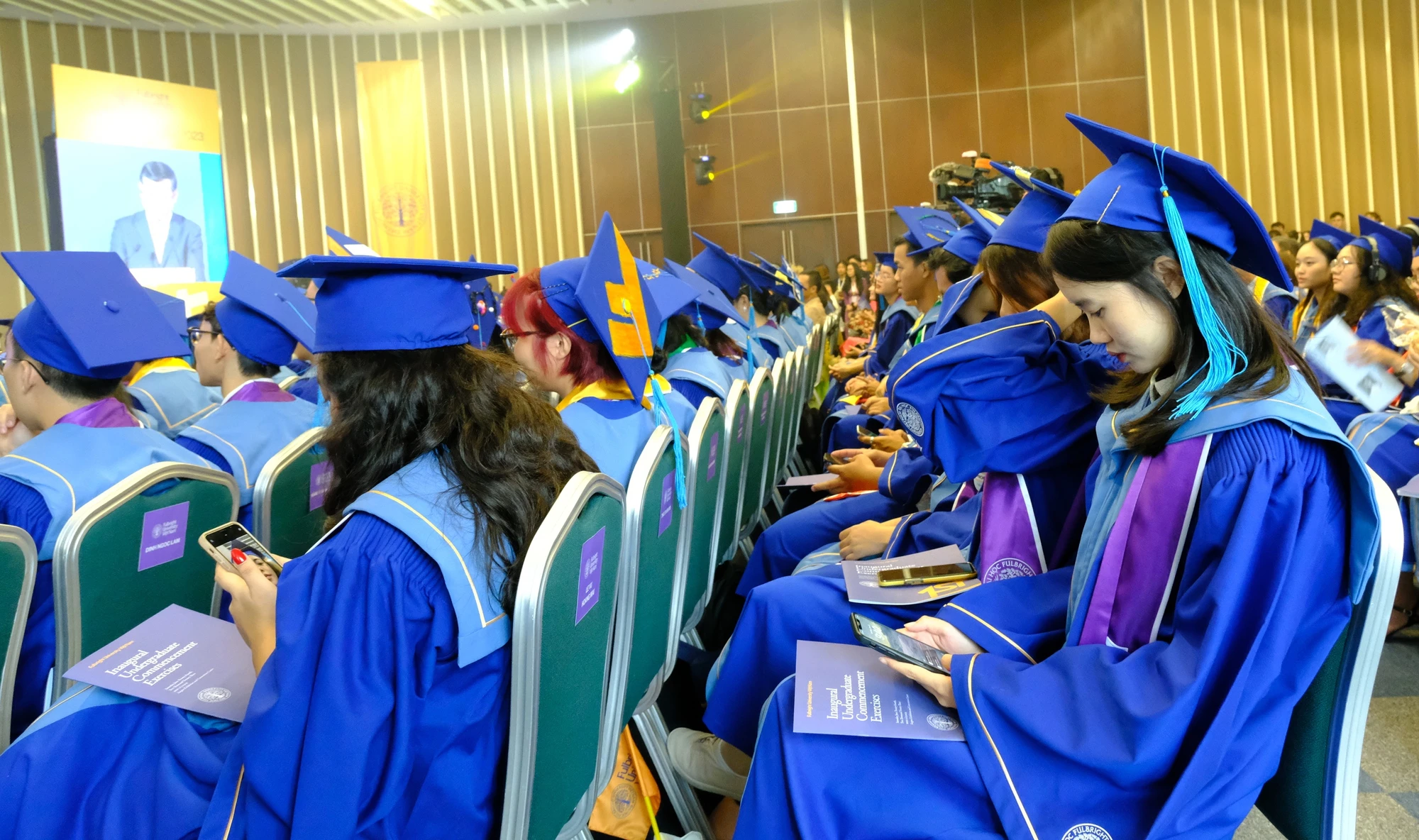This figure makes many people wonder and question the real quality of the students. Associate Professor Nguyen Phong Dien, Vice President of Hanoi University of Science and Technology, said that if there is a serious and objective evaluation system, and the training institution has 70% of good and excellent graduates, it is very good for the quality of university training.
VERY HIGH RATE, ESPECIALLY ECONOMIC GROUPS
Statistics from many universities on the ranking of graduates in recent years show that the proportion of good and excellent students is very high, especially in the group of economic schools.
For example, at the National Economics University, in the graduation examinations in April 2022 and January 2023, the school had 988 students recognized as graduates. Nearly 35% of them were excellent and 41% were good, the rate of excellent and good students accounted for 76%. Only 23% were classified as good and about 1% were average. Similarly, among the 4,577 bachelors graduating in August this year, the school also had 68% of the highest-ranking students, including over 26% excellent students and over 42% good students.

There are many schools where the percentage of students graduating with honors and distinctions is over 70% (illustrative photo)
Also in this year's graduation ceremony, Foreign Trade University had 1,791 students graduating in the second batch. Of the total 1,655 full-time graduates, 21% achieved excellent academic results, about 48.2% were good. Previously, in the first batch in April, the number of excellent and good students of this university was up to 79.7%. Specifically, of the 1,300 university graduates, 28.6% achieved excellent results and about 51.1% were good.
In March this year, Ho Chi Minh City University of Economics awarded graduation certificates to 3,978 full-time students. Statistics from the school show that there were 43 excellent students, 1,994 good students, the rate of excellent and excellent students is over 51%. At the University of Economics and Law (Ho Chi Minh City National University), the rate of excellent and excellent students is over 45%.
Not only the economic sector, the University of Education ( Hue University) in the graduation exam in June this year also had over 63% of students from excellent and above.
THERE ARE STILL SCHOOLS WITH ABOVE OR BELOW 20%
According to Associate Professor Nguyen Phong Dien, last year at Hanoi University of Science and Technology, 25% of students achieved excellent and good results, this year it is 28%.
At the end of 2022, Ho Chi Minh City University of Technical Education awarded degrees to 2,079 engineers and full-time bachelors. Of which, 3 students graduated with honors (0.14%); 397 students were ranked as good (19.1%). The percentage of good and excellent graduates of Ho Chi Minh City University of Law receiving degrees in October 2022 was only 16%.
Master Nguyen Anh Vu, Head of Communications and Brand Development Department of Banking University of Ho Chi Minh City, said that in recent years, the average graduation ranking of the school's students is about 75% good, 20% good and only 0.5% excellent. This rate of Ho Chi Minh City University of Social Sciences and Humanities is 23% (2022) and 17.5% (2021); Ho Chi Minh City University of Industry has this rate at 15 - 20% depending on the year...

Successful candidates complete admission procedures at Hanoi University of Science and Technology. Last year, 25% of this university's students achieved excellent and good grades, and this year it is 28%.
IS IT DUE TO INCREASED QUALITY?
According to Associate Professor Nguyen Phong Dien, if we base the number on a few percent increase to say that the quality has increased, it is a "somewhat absurd" conclusion because those numbers are influenced by many factors. For example, due to the change in the admission method, reserving a certain number of quotas for the talent selection method, it has attracted many good candidates. It can be said that the best students have gathered here, especially in the 4.0 fields. This shows that the inherent learning capacity of students of Hanoi University of Science and Technology is very good, and that is a very important condition for them to achieve good results upon graduation.
Another factor, recently the University of Technology has also had a solution to help students achieve good results, which is to support first and second year students to get used to the way of studying in the university environment. Thanks to that, the graduation results have been pushed up to good and excellent.
According to Mr. Dien, the good grade of Hanoi University of Science and Technology is about 60%, there are still a few average grades. But to achieve average grades, students have to struggle a lot, so after graduating, students can still do well if they have awareness and responsibility.
However, according to Mr. Dien, not only for Hanoi University of Science and Technology in particular, the university system in general, but also for the national education system, whether the assessment is suitable to reality or not, up to now that is still a question that needs an answer.
HOW TO ASSESS CHANGE
Dr. Pham Tan Ha, Vice Principal of the University of Social Sciences and Humanities, Ho Chi Minh City, said that reading the data of 60-70% of students graduating with good and excellent grades from a school makes many people "hesitant" and doubt the actual level of excellence. Mr. Ha said that the above figures show that the results of student classification have changed a lot compared to before.
"The change in student classification is due to the change in assessment methods," Dr. Ha stated the reason. Explaining the above statement, Mr. Ha said that previously, student assessment was only based on the final exam scores, but now there is an additional column for process assessment scores. Depending on the school and the specific subject, process scores can be obtained through tests, assignments, essays, presentations, group work, and even attendance scores. With the new assessment method, students and lecturers are forced to work harder, but in return, it is easier to get higher results because scores are spread out in many forms instead of depending rigidly on a single exam as before.

Such changes in student classification are due to changes in assessment methods.
Dr. Ha further analyzed: "It is also possible that lecturers today are no longer as strict with students in evaluating scores as before. Instead of giving 7 points, they are more willing to give 8, 9 - 10 points more than before. When the score is higher, the overall learning results and student rankings also increase." However, Mr. Ha said that the difference in student evaluation and ranking results between schools probably depends on the regulations of each school. For example, Ho Chi Minh City University of Social Sciences and Humanities stipulates that 70% of course scores are calculated from final exam results and 30% from process scores.
Sharing this view, Dr. Nguyen Trung Nhan, Head of Training Department of Ho Chi Minh City University of Industry, said: "Although the whole process is evaluated, lecturers can only proactively evaluate learners within 20% of the score through regular evaluation, 30% of the mid-term score and 50% of the final score through centralized exams."
Should review the assessment of learners
For many years, Hanoi University of Science and Technology has made great efforts to build a realistic and honest assessment system. However, Associate Professor Nguyen Phong Dien said that Hanoi University of Science and Technology has not dared to answer the question "Have the teachers really assessed the students' abilities objectively and fairly?".
Dr. Pham Tan Ha believes that the problem is to properly assess the nature of the learner's capacity. "Where the learner's real capacity is, that is where it needs to be assessed correctly. Therefore, it is necessary to return the assessment to its true nature so that the learner knows where he or she is," Mr. Ha said.
Dr. Nguyen Trung Nhan also said that on a general scale, the percentage of good and excellent students can vary depending on the training sector. Of which, about 15% for the field of engineering and technology and 30% for economics, social sciences and humanities is appropriate and there is a clear difference between the group of good students compared to other classifications. To do so, schools need to review the assessment of learners.
The Head of Training Department of a University in Ho Chi Minh City also commented: "The nature of assessment is for students to know where their real capacity is. From there, they know what they lack and need to further develop to meet the requirements of employers. On the contrary, an assessment that is not substantial will inadvertently create an illusion about students' own capacity, which is really dangerous."
Source link





































































































Comment (0)